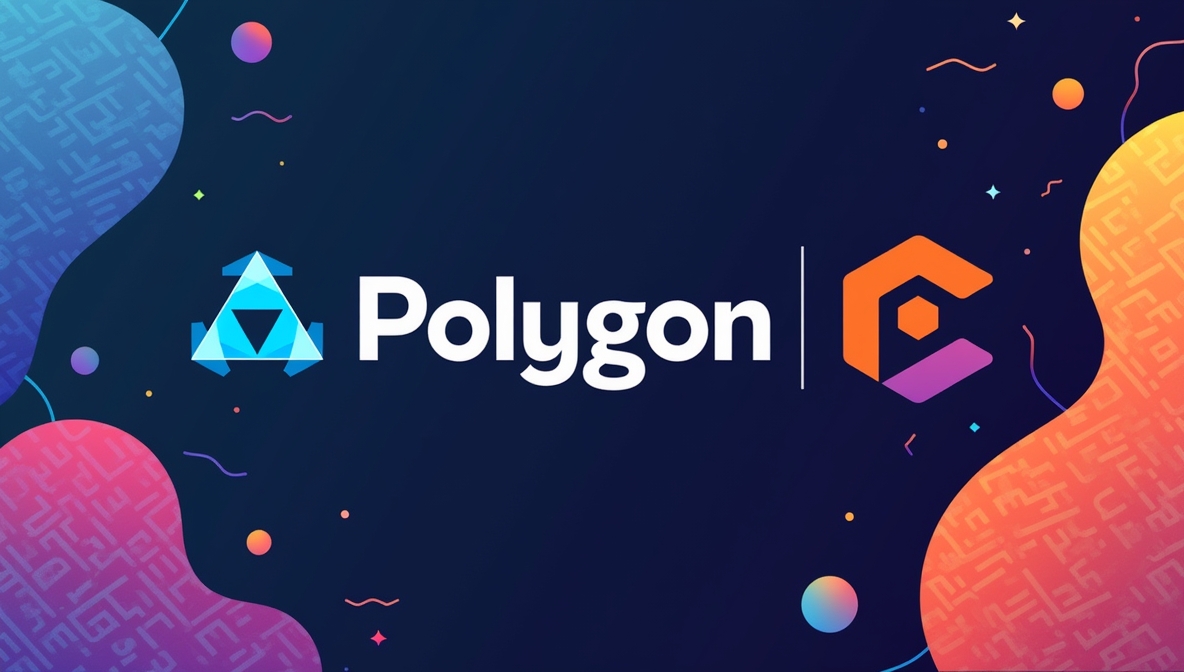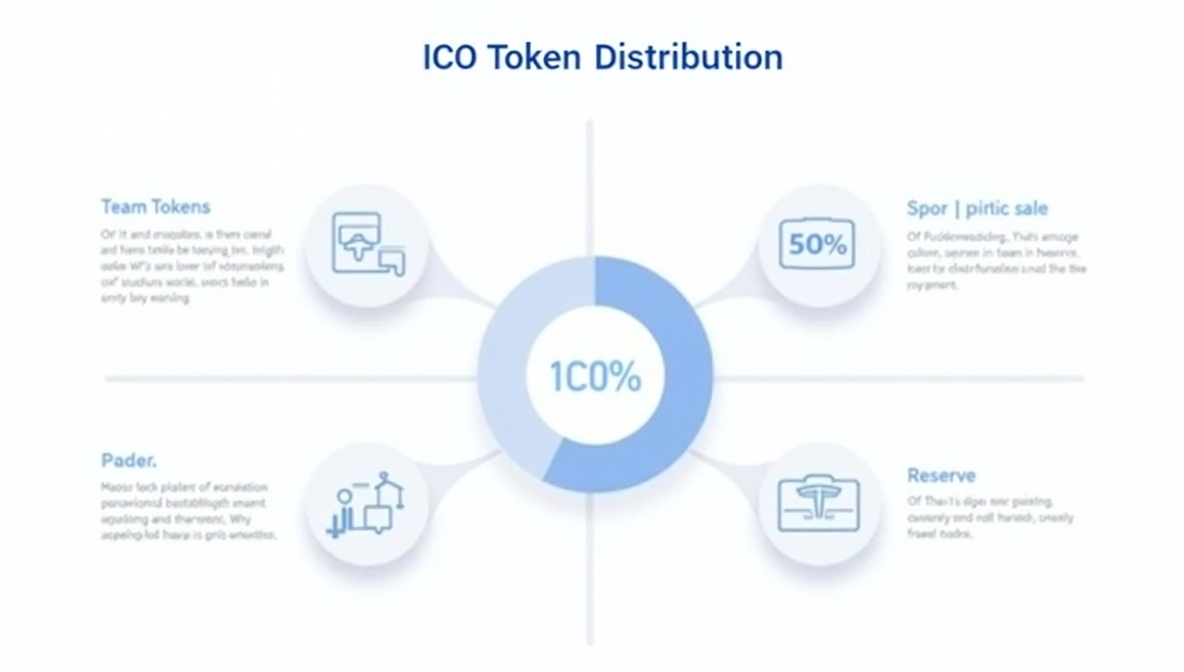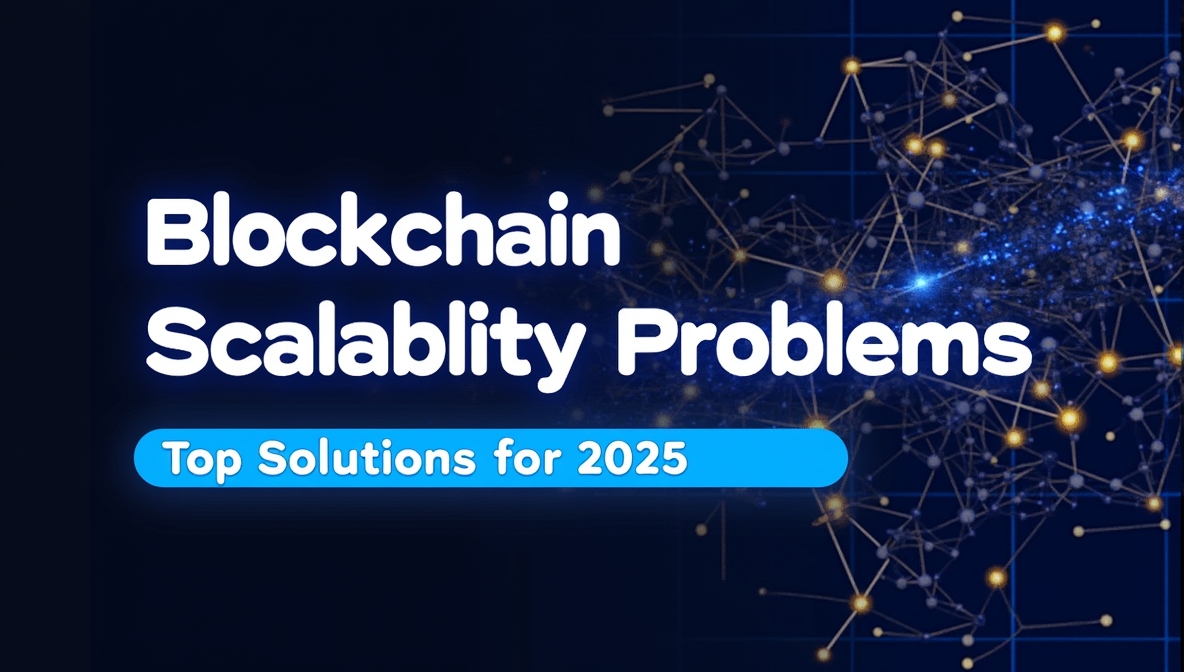Web3 social media platforms are introducing a new model for online interaction—one where users own their data, creators have direct access to monetization tools, and communities govern themselves without centralized control. Unlike traditional networks, these systems rely on blockchain infrastructure and open protocols for a more transparent and user-driven experience.
This article outlines how Web3 social media works, its challenges, and why it’s gaining traction among founders and developers. If you’re exploring how to build, invest in, or migrate to a decentralized platform, this is where to start.
An Overview of the Evolution from Web 1.0 to Web 3.0
To understand where social media might be going, it helps to look at how the internet itself has evolved.
Web 1.0 (roughly 1991–2004) was the early internet — mostly static websites, created by a small number of developers. Content was published, not discussed. You read, you moved on. There was no “liking,” no comments, no uploads from users.
Then came Web 2.0, and everything changed. Social media, blogging, wikis, and forums made it possible for users to generate content themselves. Facebook, Twitter, YouTube — all of these platforms turned people into both creators and consumers. Interaction became the norm.Now, we’re in the early stages of Web 3.0 and are witnessing its trends. This next phase brings in decentralized technologies like blockchain. The idea? Give users more control — over their data, their identity, and even how platforms are governed. In this model, ownership replaces access. It’s not just about participation; it’s about having a stake.

Why Decentralized Social Media Is Gaining Ground
Social networks are everywhere, but cracks are showing — and people are paying attention.
Here’s what’s driving the shift toward Web3-based social platforms:
- Control over data. Users are tired of being tracked and monetized. Web3 platforms are offering alternatives where data ownership stays with the individual.
- Censorship resistance. Centralized platforms have become more aggressive with moderation. Whether necessary or not, it’s pushing some users toward networks with transparent or community-driven rules.
- Monetization. Traditional platforms take the lion’s share of ad revenue. In contrast, Web3 social apps often allow direct tipping, NFT sales, or token-based rewards.
Governance. With decentralized autonomous organizations (DAOs), users can vote on platform rules and updates. It’s not just a platform — it’s a system people can help shape.
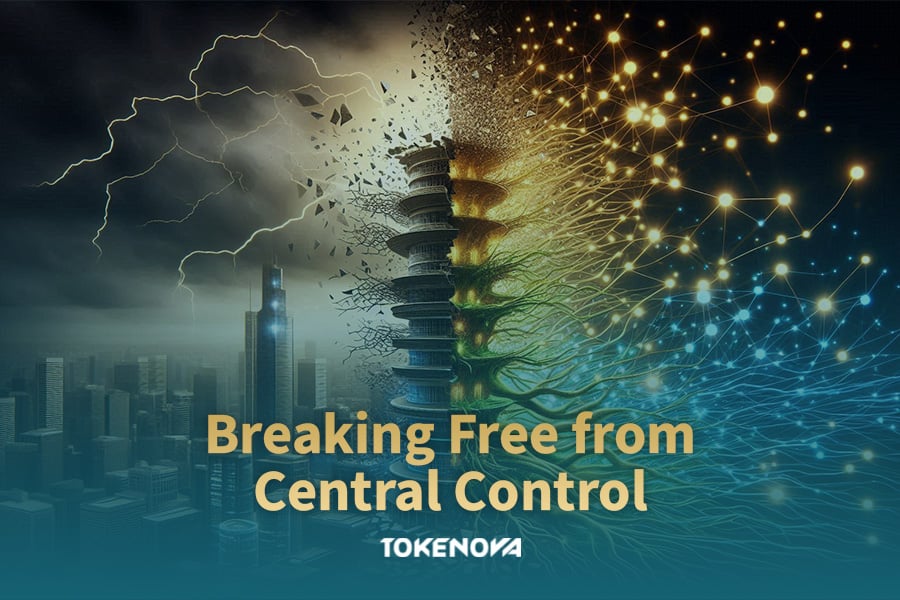
Limitations of Traditional Social Media
Web2 platforms have shaped how billions connect, but their underlying structure comes with significant trade-offs, especially for users and creators.
Centralized Control and Data Ownership
Most major platforms — Facebook, Instagram, Twitter — operate under centralized authority. A single company sets the rules, manages the servers, owns the data, and controls access.
What does this mean in practice? Users sign up and hand over large amounts of personal data, often without realizing how deeply that data is monetized. Everything from your content to your behavioral patterns can be collected, stored, and sold to advertisers or data brokers — and there’s little transparency about how that data moves behind the scenes.
There’s also a loss of ownership. Once you publish something on a centralized platform, it’s usually governed by licensing terms that give the platform extensive rights over your content. You created it, but they can profit from it, control its visibility, or remove it entirely.
This dynamic has led to recurring concerns about surveillance, data breaches, and loss of autonomy.
Content Moderation and Deplatforming
Every major platform uses a mix of automation and human oversight to enforce its rules. That sounds fair — but moderation practices are often uneven and poorly explained.
Creators and users have had posts removed, accounts suspended, or entire pages deleted without clear justification. In many cases, there’s no real appeals process. The result? Users are left guessing what went wrong — or worse, silenced without explanation.
Deplatforming has become especially contentious. Whether it’s political speech, activism, or misinformation, the rules are often inconsistent across different groups. Critics argue that moderation decisions sometimes reflect corporate interests more than community well-being.
Monetization Restrictions for Creators
If you’re a content creator using traditional platforms, you’re probably earning far less than the value you generate. Revenue streams are mostly ad-based, and the platform takes a substantial cut.
Want to monetize directly? Your options are limited. A few platforms offer tipping or subscriptions, but these systems are tightly controlled and subject to changes in policy or algorithm.
Even visibility is unpredictable. Algorithms can change without notice — what worked last week may suddenly stop working, cutting your reach and income without warning. Creators are left building businesses on shaky foundations.
What Is Web3 Social Media?
If you’re familiar with how traditional platforms operate — centralized, ad-driven, and closed — Web3 social media turns much of that inside out.
Instead of data silos and black-box algorithms, it offers networks built on transparency, decentralization, and user control.
Let’s break down what that actually means.
Core Concepts: Decentralization, On-Chain Identity, Token Incentives
At the center of Web3 social networks is a shift in control, away from centralized servers and toward distributed protocols.
- Decentralization: Unlike Facebook or X (formerly Twitter), which are controlled by single companies, Web3 social media platforms are typically built on blockchain infrastructure. That means no one party controls the data, rules, or access. Governance is shared by design.
- On-Chain Identity: Your profile is tied to a blockchain wallet. That wallet address acts as your login, your ID, and your personal hub across the ecosystem. You can use the same identity across different platforms without starting from scratch — no new passwords, no need to reverify.
- Token Incentives: User activity — posting, curating, and moderating — can earn tokens. These aren’t likes or badges. They’re assets. In many cases, they can be traded, staked, or used for governance. Some platforms even use NFTs to represent social connections or reputation.
These features help move Web3 social media away from the “you are the product” model and toward more participatory economics.
Use of Smart Contracts and Blockchain Protocols
Smart contracts run much of the back-end logic in social media on Web3. They’re self-executing scripts written into blockchain code, and they handle critical functions automatically.
Examples:
- Revenue flows — like tipping, creator subscriptions, or ad-share models — can be embedded directly in smart contracts. No intermediaries needed. When someone pays, the contract executes the split immediately.
- Governance features (voting, proposals, changes to content policy) can also be governed via smart contracts tied to DAO frameworks.
- Data storage may rely on systems like IPFS, Arweave, or Filecoin. Unlike traditional cloud storage, these solutions offer content permanence and censorship resistance, but come with trade-offs in terms of speed and scalability.
The infrastructure varies. Some projects use Ethereum or Polygon, others leverage Solana, Avalanche, or even Layer 2 rollups, depending on the design goals. These decisions affect cost, speed, and user access in all cases.
Read More: Layer 2 Solutions: Boosting Blockchain Scalability
Interoperability and Open-Source Governance
Another key feature of Web3 social media: it’s modular.
Your posts, profile, and social graph aren’t trapped in one app. In some ecosystems, you can use one identity (e.g., Lens Protocol) across dozens of front-ends. Post on one, reply on another — and your history carries over. This is what’s meant by interoperability.
Here’s how this plays out:
- Cross-platform identity: Thanks to wallet-based login and protocols like DID (Decentralized Identifiers), your profile isn’t bound to a specific company’s infrastructure.
- Data portability: You can export or carry your content and connections to other apps in the network, or off it entirely.
- Open-source development: Most serious Web3 social media projects are open-source. That’s not just about transparency — it’s also about evolution. Anyone can build on the codebase or fork the project if governance diverges from user interests.
A good example: the AT Protocol (used by Bluesky) separates identity, moderation, and interaction layers. This lets developers and users swap components in or out depending on their needs.
10 Web3 Social Media Platforms to Know
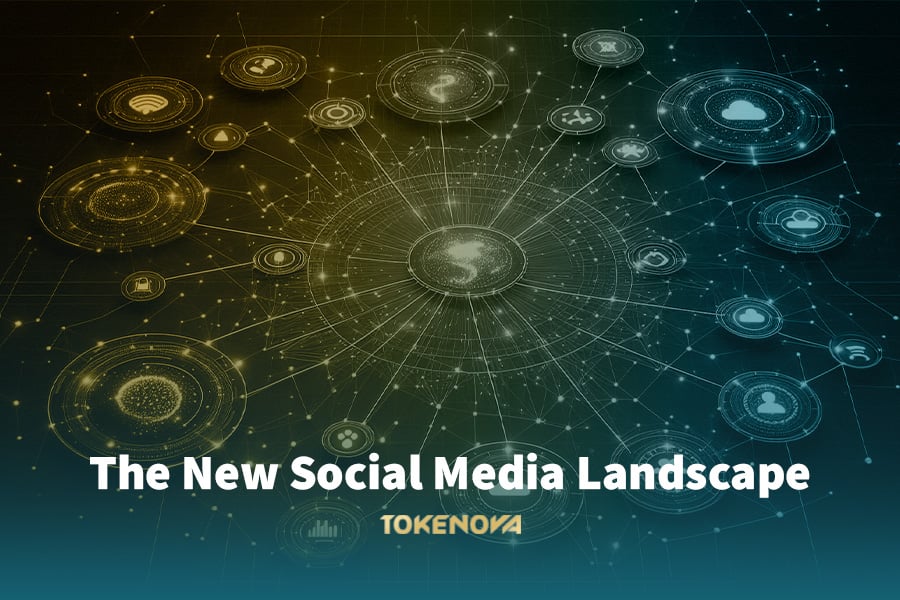
Web3 social media platforms aren’t just clones of Web2 apps — they’re built from the ground up to distribute ownership, rethink monetization, and eliminate dependency on centralized control.
Below are ten examples that highlight how this shift is taking shape across different protocols and user bases.
1. Lens Protocol
Lens Protocol, launched by Aave Companies in early 2022, is not a social app — it’s a decentralized social graph. Built on Polygon, it lets developers create multiple front-end apps while users retain ownership of their identity, followers, and content across them all.
A key difference from Web2 social media? On Lens, your profile is an NFT, and everything you post, mirror, or collect is on-chain. You can move your data from one Lens-based app to another, without losing history or connections.
Popular apps like Lenster and Orb use the Lens Protocol under the hood. The ecosystem is growing, though still gated by wallet-based onboarding and relatively low mainstream adoption.
2. Farcaster
Farcaster is a permissionless social protocol focused on “sufficient decentralization” — its own term for balancing open access with usability.
Users control their handles and identities via Ethereum, but most messages are stored off-chain for speed. Clients like Warpcast offer a clean Twitter-style interface while keeping infrastructure open for others to build alternatives.
Unlike Lens, Farcaster doesn’t tokenize every action. Its focus is more on protocol resilience and minimizing spam. For now, the community is largely composed of builders, early adopters, and Ethereum-native users.
3. Mastodon
Mastodon isn’t blockchain-based, but it shares key values with Web3 social media — namely, decentralization, federation, and autonomy.
It runs on the ActivityPub protocol and consists of independently hosted instances. Users can pick or run their own server, and interact across the network without needing a central company’s permission.
There is no token economy, no VC funding, just open-source software maintained by a nonprofit. That makes it a favorite among privacy advocates, journalists, and those who want to avoid mainstream platforms altogether.
That said, it’s not fully censorship-resistant — each instance sets its own rules, which can still result in moderation or bans.
4. Minds
Minds is one of the few Web3 social platforms with long-term traction. It looks and functions like a blend of Facebook and X — timelines, content discovery, and messaging — but Ethereum powers its back end.
Users earn $MINDS tokens for engagement (likes, shares, views), and can spend them to boost posts or tip creators. Revenue sharing is built-in, not retrofitted.
Minds also includes a jury moderation system: flagged content is reviewed by randomly selected active users, with votes determining outcomes. This brings community governance directly into the moderation process, which is rare for social media.
The platform raised $10M from FUTO in 2021 and claims over 5 million total users.
5. Mirror
Mirror is often described as “Web3 Medium,” but it’s more than just a blogging platform.
Writers on Mirror publish articles tied to Ethereum wallets — meaning their content is provably theirs. They can tokenize essays as NFTs, crowdfund projects through splits, and issue tokens tied to content performance or community support.
It’s used not just by writers, but DAOs and crypto-native projects for public documentation, announcements, and fundraising.
One example: ConstitutionDAO used Mirror to launch its campaign to buy a copy of the U.S. Constitution, raising over $40M — all coordinated through on-chain tools embedded into blog posts.
6. Bluesky
Bluesky began as a side project at Twitter but is now independent. It’s built on the Authenticated Transport Protocol (ATP) — not blockchain — and focuses on decentralized identity and algorithm choice.
Users can move accounts between services, pick how feeds are ranked, and retain their social graph even if they leave the main Bluesky app.
It’s currently invite-only, but growing quickly. Unlike many Web3 projects, it doesn’t involve crypto or tokens, but it aims to remove platform lock-in and central control, which aligns with broader Web3 goals.
It’s often compared to Mastodon, though its tech stack and moderation model are different.
7. Steemit
Steemit, launched in 2016, is one of the earliest attempts at a blockchain-based social network.
Built on the STEEM blockchain, it pays users in $STEEM for posting and curating content. Votes translate into value — upvotes literally pay out, based on the voter’s stake and influence.
Its core model combines social engagement with a token economy. However, the platform has faced controversy, especially after a hostile takeover by Justin Sun in 2020. This led to a hard fork — Hive — which now operates as a separate network with similar principles.
Despite community splits, Steemit still sees active users and tokenized content engagement.
8. DSCVR
DSCVR (short for “Discover”) is a Web3 social platform built on the Internet Computer (ICP). It’s focused on community ownership and user-governed spaces.
Communities (called “portals”) can set their own rules, monetize their content, and even manage upgrades or feature requests via voting. Tokens and NFTs can be integrated directly into posts or group features.
Unlike many blockchain apps, DSCVR’s onboarding is relatively simple — users can sign in with web2-style credentials, and wallet creation is embedded in the flow. It’s aiming to bridge the usability gap.
It’s popular in the ICP ecosystem but open to multi-chain expansion.
9. BitClout / DeSo
BitClout launched in 2021 as a controversial platform where users could buy “creator coins” — tokenized reputations tied to individual profiles.
Now rebranded as DeSo (Decentralized Social), the project has built a full stack for creating blockchain-based social media apps. It includes a custom layer-1 blockchain optimized for storing social data like posts, follows, and likes on-chain.
Developers can build anything from Twitter clones to NFT marketplaces on DeSo’s infrastructure. It supports tipping, coin launches, and identity systems — all native to its chain.
Some still criticize the project’s early launch tactics, but technically, it’s one of the more complete Web3 social frameworks available.
10. DiamondApp
DiamondApp is one of the primary interfaces for the DeSo blockchain. It focuses on creator monetization, letting users tip with $DESO, buy creator coins, or collect tokenized content.
You sign in with your wallet. Your profile, posts, and coins are all on-chain. Everything is public, portable, and interoperable across other DeSo apps.
It’s most comparable to Instagram + Patreon, but decentralized. Content moderation is minimal. Instead, users can block or filter accounts individually — giving more control without requiring top-down censorship.
It remains niche but is actively used by creators experimenting with direct fan funding models.
Web3 Social Media Trends You Should Be Paying Attention To
The rise of Web3 social media isn’t just a tech story — it’s a sign that users, creators, and developers are seeking something structurally different from what traditional platforms offer. This shift is backed by real data and shaping the direction of social networks over the next decade.
So what’s actually happening right now?
A Surge in User Activity
User numbers across decentralized social platforms are climbing fast. As of mid-2024, Web3-based social media apps had reached an estimated 10 million daily active users, up 40% from the previous quarter alone.
That kind of quarterly growth isn’t typical — it reflects an accelerating shift in user behavior, especially in developer-heavy and creator-focused ecosystems like Farcaster and Lens.
While this user base is still small compared to giants like Meta or TikTok, the speed of adoption shows that users are beginning to take decentralized alternatives seriously, particularly in tech-forward circles.
A Multi-Billion Dollar Market Is Taking Shape
The Web 3.0 market is on track to climb from roughly $3.17 billion in 2024 to close to $99.75 billion by 2034. That’s a projected compound annual growth rate of 41.18% over ten years.
Several forces are pushing this forward. Blockchain infrastructure continues to evolve. Artificial intelligence is becoming more entwined with decentralized systems. Decentralized finance (DeFi) tools are gaining traction. DAOs are no longer fringe experiments—they’re part of a growing shift toward community-led models.
North America currently accounts for the largest share, making up about 35% of the global market.
While specific numbers for Web3 social media aren’t broken out in the available data, the overall market trend suggests expanding interest across sectors—including social platforms built on decentralized protocols. The momentum is real, even if it’s still early for some segments.
Governance Is Becoming a User Function
Centralized moderation and opaque algorithms are slowly but visibly being replaced by user-run governance systems. More platforms are integrating Decentralized Autonomous Organizations (DAOs) to let communities vote on features, rules, and incentives.
Examples:
- On DSCVR, users vote on moderation rules within their communities.
- Protocols like DeSo and Lens are exploring token-based governance at the protocol level.
This trend reflects a broader shift: users don’t just want “free speech”; they want actual control over what platforms do — and don’t — allow.
Data Ownership and Privacy
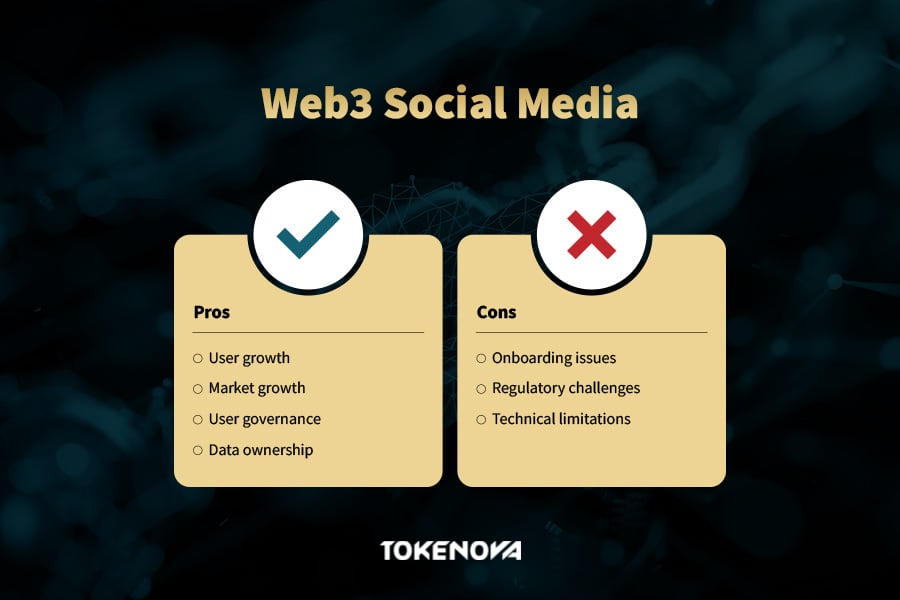
Web3 privacy concerns are driving users to Web3 platforms that treat personal data differently. Instead of mining behavior for ad revenue, most Web3 social media dApps let users control what gets shared and with whom. Wallet-based login systems replace email signups, while content remains portable and, in some cases, encrypted.
Unlike on Facebook or Instagram, where deleting an account doesn’t truly remove data, many Web3 apps offer verifiable data ownership, often tied to the user’s private keys.
Challenges and Cautions
While Web3 social media platforms offer promising alternatives to traditional networks, they also present unique challenges entrepreneurs must navigate.
Onboarding and Wallet UX Friction
One significant barrier is the complexity of onboarding. Users often face difficulties setting up digital wallets, managing private keys, and understanding transaction fees. This complexity can deter non-technical users from engaging with Web3 platforms.
Efforts to simplify this process, such as integrating social login options and embedded wallets, are underway to enhance the user experience.
Regulatory Scrutiny
Web3 social media companies operate in a rapidly evolving regulatory landscape. Issues surrounding securities laws, privacy regulations, and consumer protection are at the forefront.
For instance, the classification of certain digital assets as securities can subject platforms to stringent compliance requirements. Staying informed and adaptable to regulatory changes is crucial for sustainable operation.
Read More: Asset Tokenization Regulation: Navigating Compliance in 2025
Technical Limitations
Scalability and content moderation are ongoing technical challenges. Decentralized platforms may struggle with handling large volumes of data and ensuring real-time content delivery. Moreover, implementing effective moderation without centralized control requires innovative solutions, such as community-driven governance models.
Read More: Blockchain Scalability Challenges: Top Solutions for 2025
The Road Ahead: Future of Social Media in Web3
Looking forward, several developments are poised to shape the trajectory of Web3 social media.
Composability Between Platforms
Interoperability is becoming a key focus, allowing users to move seamlessly between different Web3 social networks. This composability enhances user experience and fosters a more connected ecosystem.
Tokenized Identity and Reputation Systems
Blockchain technology enables the creation of verifiable digital identities and reputation systems. These systems can give users greater control over their online presence and interactions, promoting trust and accountability.
Transition Scenarios from Web2 to Web3
As Web3 platforms mature, strategies for transitioning users from traditional social media are critical. This includes developing user-friendly interfaces, offering incentives for early adopters, and ensuring compatibility with existing Web2 services to ease the migration process.
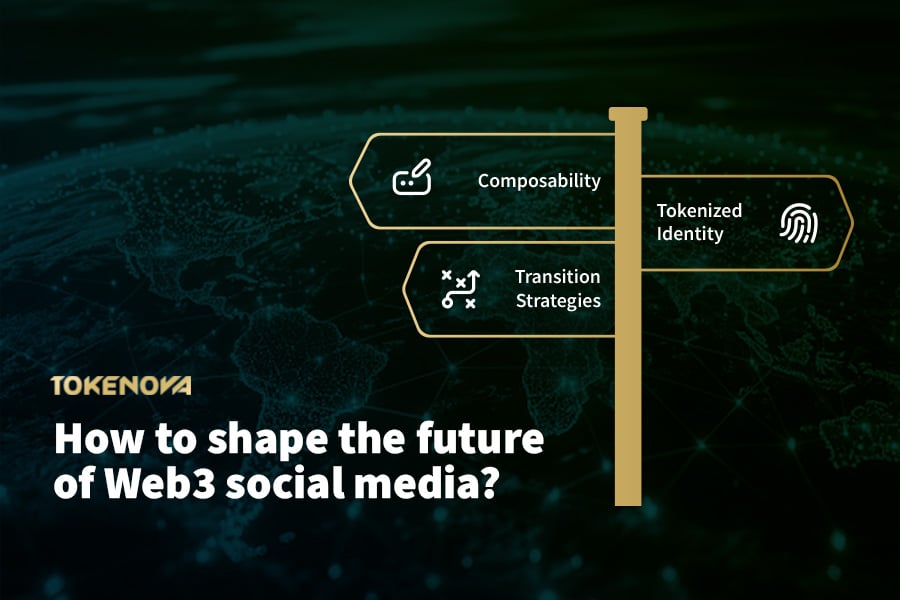
Conclusion
The evolution of social media into the Web3 paradigm represents a significant shift towards decentralization, user empowerment, and innovative economic models. Entrepreneurs venturing into this space must be prepared to address technical, regulatory, and user experience challenges.
By staying informed and adaptable, there is a substantial opportunity to contribute to and benefit from the emerging decentralized social media landscape.
If you’re considering building or migrating to a Web3 social platform, our team is equipped to assist with tokenomics, smart contracts, and legal frameworks to ensure a secure and compliant foundation for your venture.
Contact us today to explore how Tokenova can help bring your Web3 social media vision to life.
How do users authenticate on Web3 social media platforms?
Users authenticate using blockchain wallets (e.g., MetaMask), which verify identity via cryptographic signatures.
Where is content stored on Web3 social platforms?
Content is often stored using decentralized storage protocols like IPFS, Arweave, or Filecoin to ensure permanence and resistance to censorship.
What role do smart contracts play in Web3 social apps?
Smart contracts automate payments, governance votes, and interactions, ensuring trustless, rule-based operations without needing centralized enforcement.
Can Web3 platforms moderate content effectively?
Moderation is typically community-driven via DAOs or token-based voting; tools vary across ecosystems and are still evolving technically.
Are Web3 social media platforms interoperable?
Some platforms, like Lens and Farcaster, are designed for composability, allowing identity and data to move seamlessly across multiple apps.



